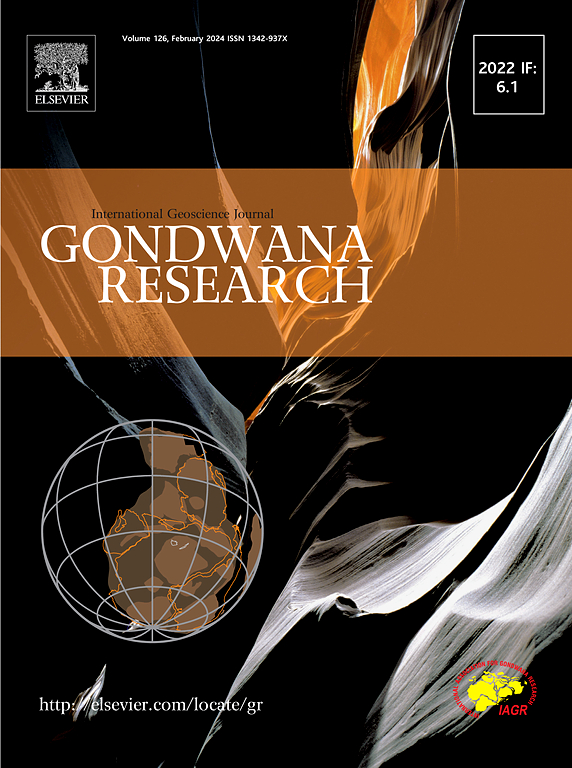基于多源数据的地震危险性评估模型稳健性研究
IF 7.2
1区 地球科学
Q1 GEOSCIENCES, MULTIDISCIPLINARY
引用次数: 0
摘要
传统的地震危险性评价模型主要关注地震条件,往往忽略了地形、地质和环境因素。单一机器学习算法有限的鲁棒性和“黑箱”性质给可靠地评估地震危险带来了挑战。本研究利用多源数据和5种超参数优化(HPO)算法,通过对传统随机森林(RF)模型进行微调,增强九寨沟县地震危险性映射(SHM)模型的鲁棒性。利用SHapley加性解释(SHAP)方法揭示地震灾害模型的决策机制,并辅以当地解释和现场调查。本研究考虑了地震因素、地形形态、地质条件、环境条件等23个因素。我们使用诸如决定系数(R2评分)和各种验证方法等指标来评估每种混合模型的性能。结果表明,随机森林-树结构Parzen Estimators (RF-TPE)模型的R2得分最高(0.9877)。RF-TPE在鲁棒性方面优于其他模型,使得用该模型构建的SHM更加可靠。研究还发现,在该地区的SHM建模中,峰值地速度(PGV)、震源距离、峰值谱加速度(PSA)、断层距离、坡度和海拔等因素的影响最大。本文章由计算机程序翻译,如有差异,请以英文原文为准。

Robustness study of seismic hazard assessment models based on multi-source data
Traditional seismic hazard assessment models mainly focus on seismic conditions, often neglecting topography, geology, and environmental factors. The limited robustness and “black-box” nature of single machine learning algorithms pose challenges in reliably assessing seismic hazard. This study leverages multi-source data and five hyperparameter optimization (HPO) algorithms to enhance the robustness of seismic hazard mapping (SHM) models in Jiuzhaigou County, China, by fine-tuning the traditional random forest (RF) model. The SHapley Additive exPlanations (SHAP) method was used to reveal decision-making mechanisms in seismic hazard models, supported by local interpretations and on-site investigations. This study considered 23 factors, including seismic factors, terrain morphology, geological conditions, and environmental conditions. We evaluated the performance of each hybrid model using metrics such as Coefficient of Determination (R2 score) and various validation methods. The results show that the Random Forest-Tree-structured Parzen Estimators (RF-TPE) model achieves the highest R2 score (0.9877). The RF-TPE outperforms other models in terms of robustness, making the SHM constructed with this model more reliable. The study also found that, in modeling SHM in the region, factors such as Peak Ground Velocity (PGV), hypocentral distance, Peak Spectral Acceleration (PSA), distance to fault, slope, and elevation are the most influential.
求助全文
通过发布文献求助,成功后即可免费获取论文全文。
去求助
来源期刊

Gondwana Research
地学-地球科学综合
CiteScore
12.90
自引率
6.60%
发文量
298
审稿时长
65 days
期刊介绍:
Gondwana Research (GR) is an International Journal aimed to promote high quality research publications on all topics related to solid Earth, particularly with reference to the origin and evolution of continents, continental assemblies and their resources. GR is an "all earth science" journal with no restrictions on geological time, terrane or theme and covers a wide spectrum of topics in geosciences such as geology, geomorphology, palaeontology, structure, petrology, geochemistry, stable isotopes, geochronology, economic geology, exploration geology, engineering geology, geophysics, and environmental geology among other themes, and provides an appropriate forum to integrate studies from different disciplines and different terrains. In addition to regular articles and thematic issues, the journal invites high profile state-of-the-art reviews on thrust area topics for its column, ''GR FOCUS''. Focus articles include short biographies and photographs of the authors. Short articles (within ten printed pages) for rapid publication reporting important discoveries or innovative models of global interest will be considered under the category ''GR LETTERS''.
 求助内容:
求助内容: 应助结果提醒方式:
应助结果提醒方式:


